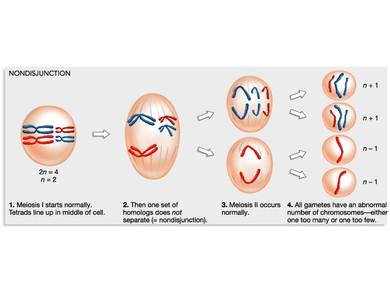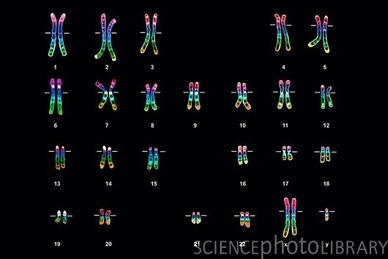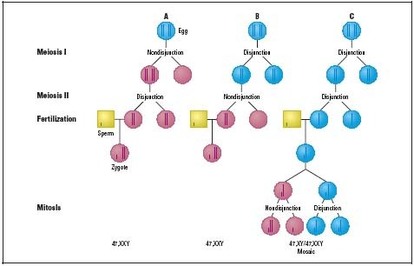What is Klinefelter syndrome?
Klinefelter syndrome, also known as the XXY condition, is a term used to describe males who have an extra X chromosome in most of their cells. Instead of having the usual XY chromosome pattern that most males have, these men have an XXY pattern. Klinefelter syndrome is named after Dr. Henry Klinefelter, who first described a group of symptoms found in some men with the extra X chromosome. Even though all men with Klinefelter syndrome have the extra X chromosome, not every XXY male has all of those symptoms.
Because not every male with an XXY pattern has all the symptoms of Klinefelter syndrome, it is common to use the term XXY male to describe these men, or XXY condition to describe the symptoms.
Scientists believe the XXY condition is one of the most common chromosome abnormalities in humans. About one of every 500 males has an extra X chromosome, but many don’t have any symptoms.
Klinefelter syndrome, also known as the XXY condition, is a term used to describe males who have an extra X chromosome in most of their cells. Instead of having the usual XY chromosome pattern that most males have, these men have an XXY pattern. Klinefelter syndrome is named after Dr. Henry Klinefelter, who first described a group of symptoms found in some men with the extra X chromosome. Even though all men with Klinefelter syndrome have the extra X chromosome, not every XXY male has all of those symptoms.
Because not every male with an XXY pattern has all the symptoms of Klinefelter syndrome, it is common to use the term XXY male to describe these men, or XXY condition to describe the symptoms.
Scientists believe the XXY condition is one of the most common chromosome abnormalities in humans. About one of every 500 males has an extra X chromosome, but many don’t have any symptoms.
How Common is Klimefelter's Syndrome?
Klinefelter syndrome affects 1 in 500 to 1,000 males. Klinefelter syndrome does not occur in females.
Is Klimefelter's Syndrome Inherited?
This condition is not inherited it usually occurs as a random event during the formation of reproductive cells. An error in cell division called nondisjunction results in a reproductive cell with an abnormal number of chromosomes. For example, an egg or sperm cell may gain one or more extra copies of the X chromosome as a result of nondisjunction. If one of these atypical reproductive cells contributes to the genetic makeup of a child, the child will have one or more extra X chromosomes in each of the body's cells.
Nondisjunction:Failure of paired chromosomes to disjoin (separate) during cell division so that both chromosomes go to one daughter cell and none to the other.
Nondisjunction:Failure of paired chromosomes to disjoin (separate) during cell division so that both chromosomes go to one daughter cell and none to the other.
What are the symptoms of the XXY condition?
Klinefelter's syndrome affect it's patients in various ways. The symptoms depend on how many XXY cells a man has, how much testosterone is in his body, and his age when diagnosed. This syndrome affects the boys who have it in three different areas:
Klinefelter's syndrome affect it's patients in various ways. The symptoms depend on how many XXY cells a man has, how much testosterone is in his body, and his age when diagnosed. This syndrome affects the boys who have it in three different areas:
- Physical development:
As babies many XXY males have weak muscles and reduced strength. They
may sit up, crawl, and walk later than other babies. At around age
four XXY males tend to be taller and sometimes have less muscle control and
coordination than other boys their age.
When XXY males begin puberty they usually don’t produce as much testosterone as other boys. This can lead to a taller, less muscular body, less facial and body hair, and broader hips than other boys. XXY males may have larger breasts, weaker bones, and a lower energy level than other boys.
In adulthood XXY males look basically the same to males without the condition, although they are often taller. They are also more likely than other men to have certain health problems: like autoimmune disorders, breast cancer, vein diseases, osteoporosis, and tooth decay.
XXY males can have normal sex lives, but they usually make little or no sperm. 95-99% of XXY males are infertile because they don't produce much sperm. - Language development: 25-85% of XXY males have some kind
of language problem including: learning to talk late, trouble using
language to express thoughts and needs, problems reading, and trouble
processing what they hear.
Then when XXY males are adults they have a harder time doing work that involves reading and writing but most are able to hold jobs and have successful careers. - Social development:
As babies, XXY males tend to be quiet and undemanding. As they get
older, they are usually quieter, less self-confident, less active, and
more helpful and obedient than other boys.
What are the treatments for the XXY condition?
The XXY chromosome pattern can not be changed. So you cannot cure this syndrome, but there are various treatments for this syndrome to help with the XXY condition.
The XXY chromosome pattern can not be changed. So you cannot cure this syndrome, but there are various treatments for this syndrome to help with the XXY condition.
- Educational treatments – As children, many XXY males qualify for special services to help them in school. Teachers can also help by using certain methods in the classroom, such as breaking bigger tasks into small steps.
- Therapeutic options – A variety of therapists, such as physical, speech, occupational, behavioral, mental health, and family therapists, can often help reduce or eliminate some of the symptoms of the XXY condition, such as poor muscle tone, speech or language problems, or low self-confidence.
- Medical treatments – Testosterone replacement therapy (TRT) can greatly help XXY males get their testosterone levels into normal range. Having a more normal testosterone level can help develop bigger muscles, deepen the voice, and grow facial and body hair. TRT often starts when a boy reaches puberty. Some XXY males can also benefit from fertility treatment to help them father children.



